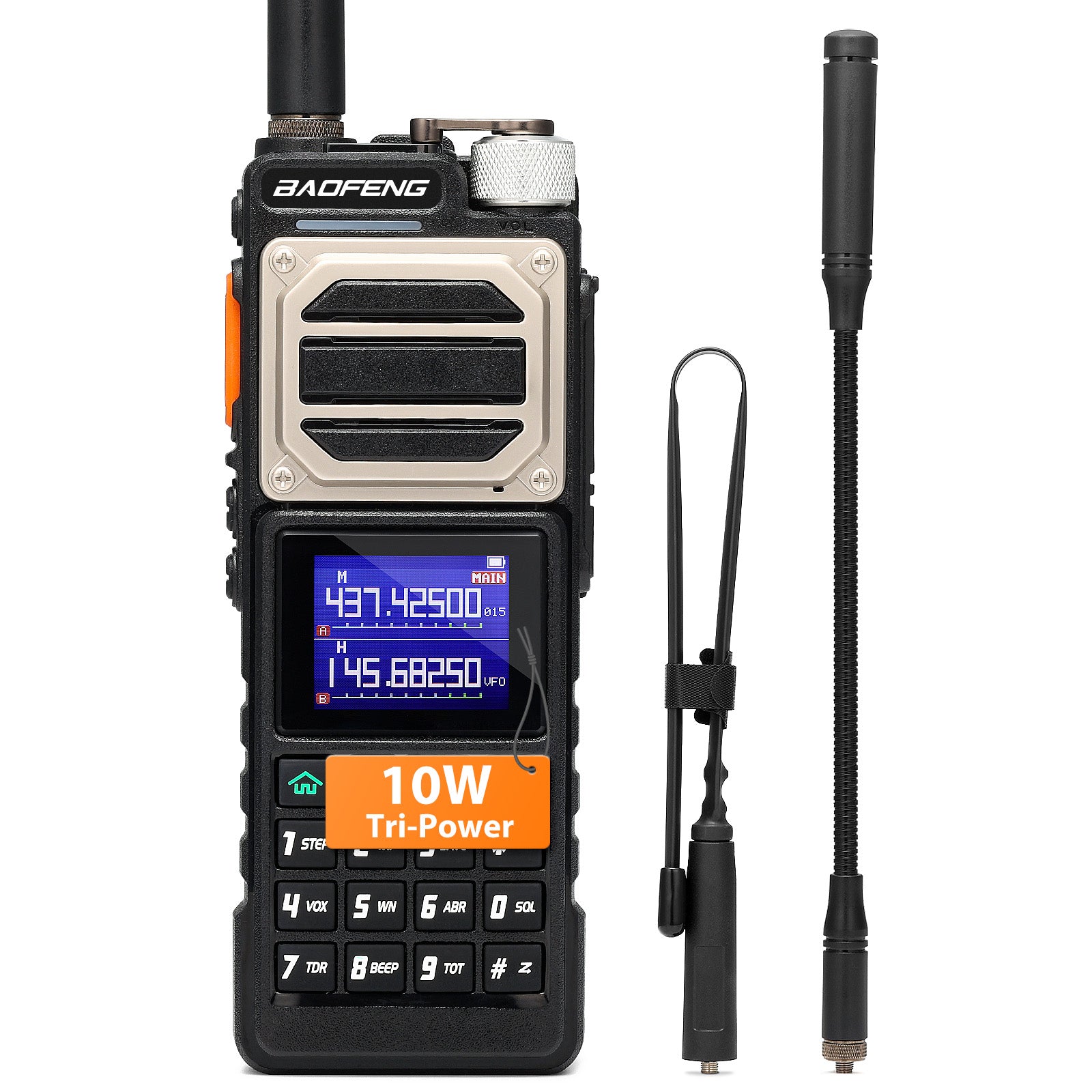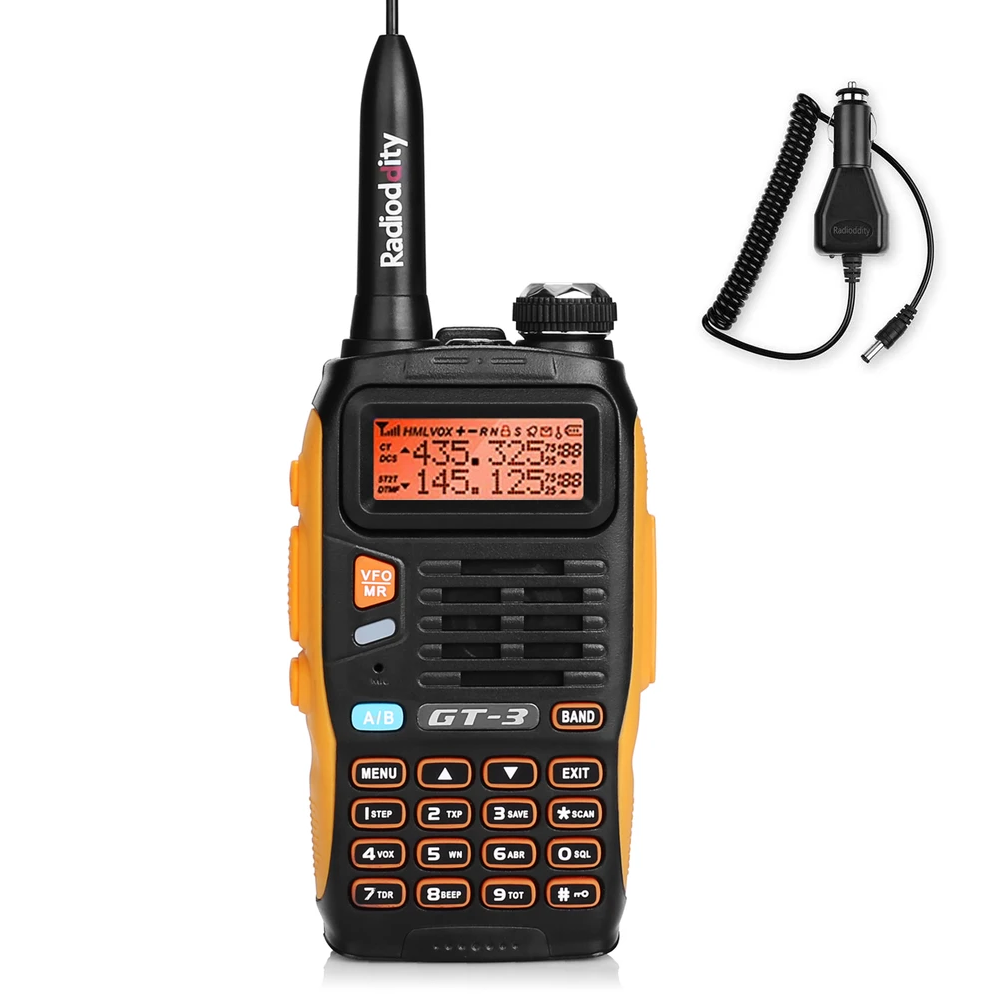Beginners Quick Guide | The Basics of DMR Digital Mobile Radio (Updated: 2024)
- Ham Talk
-
 Posted by Jackson Chen
Posted by Jackson Chen
- Leave a comment
--- by Jason Reilly
Introduction:
"The nice thing about standards is there are so many to choose from." I love the ironic humor in this statement; a standard should result in everyone doing things the same way in order to be compatible, and prevent having to constantly re-invent the wheel. Yet, everyone has to have their own standard! Just take two-way radio digital voice systems for example: there’s P25 phase 1 and phase 2, NDXN, DMR, TETRA, OpenSky, Provoice, and dPMR, along with a whole host of legacy digital voice modes as well. That doesn’t even consider the ham radio contenders, such as DStar, Fusion, FreeDV, some old offerings from Alinco & AOR and so on. And guess what? Absolutely none of them are compatible!
Choosing what digital voice standard you'll go with can be daunting. For emergency services and government communications, P25 is by far the most dominant, there’s no doubt about that. For business & private radio, DMR followed by NXDN is the two most popular choice. In the ham radio arena, the picture is a little less clear. DStar took an early lead, but Yaesu is keen to take market share with their Fusion offering. Hams have always been keen to leverage off existing commercial equipment, and it seems the most popular commercial system adopted presently is DMR.
Personally, I think DMR will take the lead in both the commercial business & private two-way radio field as well as in ham radio. This is helped in no small part by the ready availability of DMR radio equipment at prices that rival traditional analog two-way radio, and that one of the biggest names in two-way radio, Motorola, are throwing their weight behind DMR.

Motorola's SL7750 blurs the line between DMR radio and cellular mobile phone
Three flavours:
There are three "tiers" or levels of functionality for DMR systems.
Tier 1: The simplest form of DMR is Tier 1, which is mainly used for simplex communications, with no repeaters. The human voice is digitally sampled and compressed with the AMBE+2 codec, and then transmitted in this digital form to another radio.
Tier 2: Things start to get a bit more complicated here. With Tier 2 DMR, repeaters are used in a TDMA arrangement, with two "timeslots. What this means is that two completely separate radio transmissions can be going through the repeater at the same time; each radio takes turns in transmitting in short 27.5 millisecond bursts. In addition to this, radios can be set to logical closed groups called ’talk groups’, which you can think of as ’virtual channels’. Repeaters can be linked via the internet to form networks that can be as small as just two repeaters, or thousands of repeaters across the world. Again, the AMBE+2 codec is used to turn speech into compressed data for transmission. All amateur radio DMR systems are Tier 2, as are many business / commercial radio DMR systems.
Tier 3: This is effectively a trunked radio system on top of Tier 2. A pool of frequencies are used to carry the TDMA transmissions. This is used by more complex or larger networks for big businesses and commercial radio users.
The advantages of DMR:
So why go to all this trouble, when plain old analogue FM works perfectly well? DMR has the advantage that it four times more efficient when it comes to spectrum usage. For one 25 kHz analogue FM channel, you could fit four DMR transmissions. Not only that, but DMR offers some very flexible calling facilities - you can call one person, a group of people, or everyone in your fleet at once. While not every DMR network supports it, sending of data and short messages is also possible. DMR is also designed to be easy to network, with connections using IP, so creating wide coverage areas using a network of DMR repeaters is already built-in; cover your city or cover the entire country! Yet another advantage is because a DMR transmitter is only turned on about half the time due to it transmitting in bursts, battery life is longer.
TYT's hugely popular MD-380 can be bought for around $100
Some DMR Jargon:
Colour codes: Every DMR transmission uses a "colour code" which is very similar to CTCSS or PL tones in the analogue radio world. On a repeater or simplex frequency, every radio must use the same colour code to be able to communicate together. The main use for colour codes is for where two repeater coverage areas on the same frequency may overlap, different colour codes are used to ensure each radio accesses the correct repeater.
Timeslot: For Tier 2 and 3 systems, a timeslot is a slice of time, about 30ms long, that a radio can transmit in, or receive in. There are two timeslots per frequency, and you need to have your radio configured for the right colour code for the repeater, the correct timeslot and correct talkgroup for you to be able to hear anything.
Zones: This is simply a collection of channels & talkgroups, all grouped together in one "zone" or bank. A radio user can switch zones to access a different lot of channels & talkgroups that they may wish to use. Typically a zones are divided into repeaters for different areas, so you might have one zone for the west side of a city, and another covering the east side of the city - but there's nothing to say that you must set up a zone that way.
Code Plug: This is a Motorola term that has stuck over the years, and in the DMR context means a complete configuration file of channels, talkgroups, zones, contacts etc. for a radio. The code plug can be saved to computer disc, and is used to program a radio to give it the functionality a user requires.
CPS: Another Motorola term, meaning Customer Program Software. Simply put, this is the software you’d use to create a "code plug" and configure your radio.
Hotspot: A small box that connects to the internet and acts like your own personal low power DMR repeater, useful if you're not in range of a DMR repeater to access. You can even take them with you and use your cell / mobile phone wireless data to connect the hotspot to the internet and be able to use DMR anywhere you get cellular signal. Most hotspots are multi-mode, handling not only DMR but DStar, Yaesu Fusion and P25 as well. ZUMspot, Jumbospot, Openspot, MMDVM etc are all examples of hotspots that you can buy or build yourself.
Radioddity GD-77, dual band, DMR & FM, I think the best bang-for-your-buck DMR portable, also around $100
So what's in it for me?
The use of DMR in radio hobbyist circles falls into two categories: ham / amateur radio and scanning receiver use. Lets take a quick look at each:
Ham radio: Hams have long taken advantage of surplus, second hand, or even new commercial radio equipment and re-purposed it for their own use, and DMR equipment is no exception. Worldwide, DMR enabled and connected repeaters are appearing and are interconnected to provide a huge linked network spanning the entire globe. Depending on the talk group selected, you could be communicating just around town, across your region, across the entire country, and some groups even cover the world. Motorola DMR equipment is frequently used, but increasingly the cheaper units, in particular TYT, have increased the affordability and availability of DMR equipment to the mass market. In some cases, you can get on air to the DMR scene for less than a hundred dollars!
Scanning: As the world relentlessly marches on to a digital future, many businesses and commercial interests have migrated their legacy analogue FM two way radio systems to DMR. There are scanners available that can hear DMR, enabling the scanning hobbyist to continue to listen to such transmissions. For those hobbyists who can’t justify the high price tag of those scanners to listen in to DMR, there are other alternatives: certain computer software can decode DMR with a regular scanner and a ’discriminator tap’, or a ’virtual audio cable’ if using an SDR, or if portable DMR reception is desired, an entry level DMR transceiver from TYT or Radioddity will do the job very well - to keep yourself on the correct side of the law, you should disable any transmit capabilities of these transceivers.
![Radioddity GD-168 [OPEN BOX] - Radioddity](http://radioddity.myshopify.com/cdn/shop/files/GD-168_1600x1600_3922a234-2fe4-4b80-8282-3f6d17a10d71.png?v=1741052607)










![Baofeng GT-5R 5W Dual Band Radio [Upgraded Legal Version of UV-5R] - Radioddity](http://radioddity.myshopify.com/cdn/shop/products/GT-5RImage.png?v=1616751303)
![Baofeng UV-5R PLUS [5 Colors] | DUAL BAND | 4/1W | 128CH | FLASHLIGHT - Radioddity](http://radioddity.myshopify.com/cdn/shop/products/3_58c037e1-560a-4c85-bd75-67c202269d29.jpg?v=1620894599)










![GA-2S UHF Long Range USB Two way Radio [2/4/6 Packs] - Radioddity](http://radioddity.myshopify.com/cdn/shop/products/5_96d2d28c-8609-4f29-926b-d423141df2f4.jpg?v=1598864722)



![Baofeng BF-888S [2 Pack] | UHF | 5W | 16CH | CTCSS/DCS | Flashlight - Radioddity](http://radioddity.myshopify.com/cdn/shop/products/1___1___1.jpg?v=1609202373)
![Baofeng GT-1 [2 Pack] | UHF | 5W | 16CH | Flashlight | FM Function Two-Way Radio - Radioddity](http://radioddity.myshopify.com/cdn/shop/products/ia_100000006122.jpg?v=1610525724)





















11 comments
Mohan VU2ICI
Thank you Jason Reilly for nice article about the basics of DMR. I understood the technical terms and operations of DMR.
Mark Jones
Having been a ham since the late 1980’s I have mostly confined my activities to 2m/70cm analogue, HF and morse code. Hams tend to be split into two camps re DMR, either ‘it’s an exciting new mode’ or ‘it’s not radio’. There are so many different modes that a radio ham can use now, and hams have always been inventive and adapted new technology (in some cases they have invented it). I have recently purchased a AnyTone AT-D878UV II Plus DualBand DMR radio and a Raspberry Pi hotspot. I think DMR is actually a very interesting ‘new’ mode and I would recommend any new radio ham keep an open mind when considering which modes they will embrace. The bottom line is, if you don’t like a particular mode of communication, don’t use it, but more importantly, don’t berate other people’s interests and fun. Have a great time.
Mike
Since I first got a chance to use and test digital radio and see digital TV , to say the least very unimpressed. The best paragraph about digital radio I have had the pleasure to read is the following:
“Sometimes, I swear that had Marconi invented digital transmission modes instead of analog ones, we would all be sitting around here, right now in 2007, dismantling our old, less glamorous digital systems, and placing orders for new, cutting edge “analog” technology with the miraculous powers of cutting through interference, extending signal range, and delivering true voice quality without heavy psychoacoustic speech codec artifacting. “
I still feel the same way in 2024 proving that analog “IS” a real standard and operates much batter than digital BY FAR!
Steve
I am just getting into DMR, as of today. At this point I am only starting on the ground floor with the GD-73A that I bought from one of our local club members and thankfully, he programmed it for me to get started with. I have had it on all afternoon and evening just listening to several talk groups and already I am amazed at what I am hearing. I am certainly not mic shy but wanted to listen and learn first for a little while. Even for the 2 watts this little pocket raqdio puts out, I have no problem getting into our local DMR repeater. And already, I am looking into getting or building a hotspot for when I am out and about away from the city. This is going to be a fun addition to the shack.Hopefully the GD-77 will be back soon.
Jan
Super